#d1cccd Color Information
In a RGB color space, hex #d1cccd is composed of 82% red, 80% green and 80.4% blue. Whereas in a CMYK color space, it is composed of 0% cyan, 2.4% magenta, 1.9% yellow and 18% black. It has a hue angle of 348 degrees, a saturation of 5.2% and a lightness of 81%. #d1cccd color hex could be obtained by blending #ffffff with #a3999b. Closest websafe color is: #cccccc.
-
- R 82
- G 80
- B 80
-
- C 0
- M 2
- Y 2
- K 18
● #d1cccd color description : Grayish red.
#d1cccd Color Conversion
The hexadecimal color #d1cccd has RGB values of R:209, G:204, B:205 and CMYK values of C:0, M:0.02, Y:0.02, K:0.18. Its decimal value is 13749453.
| Hex triplet | d1cccd | #d1cccd |
|---|---|---|
| RGB Decimal | 209, 204, 205 | rgb(209,204,205) |
| RGB Percent | 82, 80, 80.4 | rgb(82%,80%,80.4%) |
| CMYK | 0, 2, 2, 18 | |
| HSL | 348°, 5.2, 81 | hsl(348,5.2%,81%) |
| HSV (or HSB) | 348°, 2.4, 82 | |
| Web Safe | cccccc | #cccccc |
| CIE-LAB | 82.459, 1.901, 0.108 |
|---|---|
| XYZ | 58.905, 61.149, 66.454 |
| xyY | 0.316, 0.328, 61.149 |
| CIE-LCH | 82.459, 1.904, 3.247 |
| CIE-LUV | 82.459, 2.789, -0.173 |
| Hunter-Lab | 78.198, -2.386, 4.353 |
| Binary | 11010001, 11001100, 11001101 |
Color Schemes with #d1cccd
Alternatives to #d1cccd
Below, you can see some colors close to #d1cccd. Having a set of related colors can be useful if you need an inspirational alternative to your original color choice.
#d1cccd Preview
This text has a font color of #d1cccd.
<span style="color:#d1cccd;">Text here</span>This paragraph has a background color of #d1cccd.
<p style="background-color:#d1cccd;">Content here</p>This element has a border color of #d1cccd.
<div style="border:1px solid #d1cccd;">Content here</div>.text {color:#d1cccd;}.background {background-color:#d1cccd;}.border {border:1px solid #d1cccd;}Shades and Tints of #d1cccd
A shade is achieved by adding black to any pure hue, while a tint is created by mixing white to any pure color. In this example, #010101 is the darkest color, while #f6f5f5 is the lightest one.
-
#010101
#010101rgb(1,1,1) -
#0b0a0a
#0b0a0argb(11,10,10) -
#151314
#151314rgb(21,19,20) -
#201c1d
#201c1drgb(32,28,29) -
#2a2627
#2a2627rgb(42,38,39) -
#342f30
#342f30rgb(52,47,48) -
#3e383a
#3e383argb(62,56,58) -
#494243
#494243rgb(73,66,67) -
#534b4d
#534b4drgb(83,75,77) -
#5d5456
#5d5456rgb(93,84,86) -
#685e60
#685e60rgb(104,94,96) -
#726769
#726769rgb(114,103,105) -
#7c7073
#7c7073rgb(124,112,115)
-
#87797c
#87797crgb(135,121,124) -
#908486
#908486rgb(144,132,134) -
#998e90
#998e90rgb(153,142,144) -
#a2989a
#a2989argb(162,152,154) -
#aca3a5
#aca3a5rgb(172,163,165) -
#b5adaf
#b5adafrgb(181,173,175) -
#beb7b9
#beb7b9rgb(190,183,185) -
#c8c2c3
#c8c2c3rgb(200,194,195) -
#d1cccd
#d1cccdrgb(209,204,205) -
#dad6d7
#dad6d7rgb(218,214,215) -
#e4e1e1
#e4e1e1rgb(228,225,225) -
#edebeb
#edebebrgb(237,235,235) -
#f6f5f5
#f6f5f5rgb(246,245,245)
Tones of #d1cccd
A tone is produced by adding gray to any pure hue. In this case, #d1cccd is the less saturated color, while #fe9fb2 is the most saturated one.
-
#d1cccd
#d1cccdrgb(209,204,205) -
#d5c8cb
#d5c8cbrgb(213,200,203) -
#d8c5c9
#d8c5c9rgb(216,197,201) -
#dcc1c6
#dcc1c6rgb(220,193,198) -
#e0bdc4
#e0bdc4rgb(224,189,196) -
#e4b9c2
#e4b9c2rgb(228,185,194) -
#e7b6c0
#e7b6c0rgb(231,182,192) -
#ebb2bd
#ebb2bdrgb(235,178,189) -
#efaebb
#efaebbrgb(239,174,187) -
#f3aab9
#f3aab9rgb(243,170,185) -
#f6a7b7
#f6a7b7rgb(246,167,183) -
#faa3b4
#faa3b4rgb(250,163,180) -
#fe9fb2
#fe9fb2rgb(254,159,178)
Color Blindness Simulator
Below, you can see how #d1cccd is perceived by people affected by a color vision deficiency. This can be useful if you need to ensure your color combinations are accessible to color-blind users.
